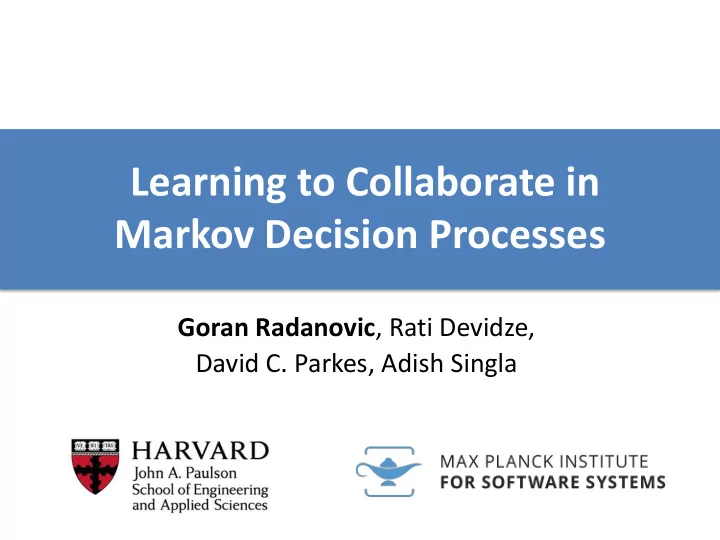

Learning to Collaborate in Markov Decision Processes Goran Radanovic , Rati Devidze, David C. Parkes, Adish Singla
Motivation: Human-AI Collaboration Example setting Helper-AI Human Agent A1 Agent A2 Task (Best) responds Commits to to ! " policy ! " Behavioral differences Agents have different models of the world [Dimitrakakis et al., NIPS 2017] 2
Motivation: Human-AI Collaboration Helper-AI Human Agent A1 Agent A2 Task ! # changes Humans change/adapt their behavior over Commits to over time policy ! " time. Can we utilize learning to adopt a good policy for A1 despite the changing behavior of A2, without detailing A2's learning dynamics? 3
Formal Model: Two-agent MDP • Episodic two-agent MDP with commitments • Goal: design a learning algorithm for A1 that achieves a sublinear regret – Implies near optimality for smooth MDPs Rewards and transitions are non-stationary. Agent A1 4
Experts with Double Recency Bias • Based on experts in MDPs: – Assign an experts algorithm to each state – Use ! values as experts’ losses [Even-Dar et al., NIPS 2005] • Introduce double recency bias & ',) 0 * ' = 1 ! Γ - & ',) )./ " − 1 " − % Recency windowing Recency modulation 5
Main Results (Informally) Theorem: The regret or ExpDRBias decays as !(# $%& '( )*+ , , . / ) , provided that the magnitude change of A2’s policy is !( # (1 ) . Theorem: Assume that the magnitude change of A2’s policy is Ω(1) . Then achieving a sublinear regret is at least as hard as learning parity with noise . 6
Thank you! • Visit me at the poster session! 7
Recommend
More recommend